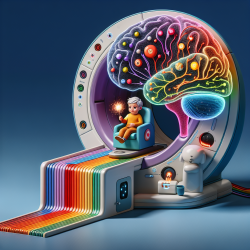Understanding Language Reorganization Through fMRI: Implications for Speech-Language Pathologists
Functional Magnetic Resonance Imaging (fMRI) is a powerful tool that provides insights into the brain's language network, particularly in the context of brain tumors. The study titled "Effect of Tumor Genetics, Pathology, and Location on fMRI of Language Reorganization in Brain Tumor Patients" offers valuable data that can enhance the practice of speech-language pathologists (SLPs), especially those working with children.
Key Findings from the Research
The study evaluated 405 patients with brain tumors, focusing on how tumor-related variables (such as location, grade, and genetics) and patient-related variables (like age, sex, and handedness) affect language reorganization. The findings revealed significant associations between language laterality and factors such as tumor location in Broca's and Wernicke's areas, as well as genetic mutations like FGFR and MGMT promoter methylation.
Implications for Speech-Language Pathology
Understanding the brain's capacity for language reorganization is crucial for developing effective therapy strategies. Here are some ways SLPs can apply these insights:
- Individualized Therapy Plans: Recognizing that tumor location and genetics influence language reorganization can help SLPs tailor therapy to each child's unique neurological profile.
- Enhanced Assessment Techniques: Incorporating fMRI data into assessments can provide a more comprehensive understanding of a child's language capabilities and potential for reorganization.
- Focus on Plasticity: The brain's ability to reorganize language functions suggests that therapy should emphasize activities that promote neuroplasticity, especially in children whose brains are still developing.
Encouraging Further Research
While the study provides a robust foundation, further research is needed to explore the mechanisms of language plasticity in greater depth. SLPs are encouraged to collaborate with neuroscientists to investigate how these findings can be translated into practical therapy techniques. Such collaborations could lead to the development of innovative interventions that enhance language outcomes for children with neurological challenges.
Conclusion
The insights gained from fMRI studies of language reorganization in brain tumor patients offer promising avenues for improving speech-language therapy. By integrating these findings into practice, SLPs can better support the language development of children, particularly those affected by neurological conditions.
To read the original research paper, please follow this link: Effect of tumor genetics, pathology, and location on fMRI of language reorganization in brain tumor patients.










